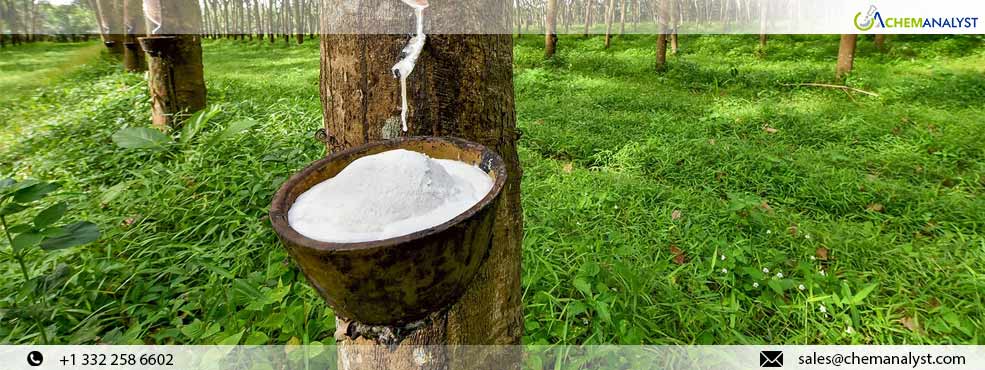Global Natural Rubber Prices Set to Surge: Geopolitical Tensions and Climate Hurdles Create Perfect Storm
- 29-Apr-2024 2:25 PM
- Journalist: Yage Kwon
The Natural Rubber market is poised for an upturn in prices in the month of April, driven by a confluence of factors that are set to reshape the landscape of both exporting and importing nations. Natural Rubber, a vital raw material derived from the latex of rubber trees, finds extensive applications across various industries, notably in the production of tires, automotive parts, footwear, adhesives, and medical devices.
Thailand, a key player in the Natural Rubber market, is facing imminent disruptions as several raw material production areas have ceased cutting operations. The resultant supply constraints of Natural Rubber have led to fluctuations in the price of Thai adhesive, underscoring the uncertainties prevailing in the market as of mid of April. Similarly, Vietnam and China confront their own production challenges, with Vietnam's production areas yet to commence harvesting and drought issues in Yunnan, China, hindering rubber cutting activities.
Despite these challenges, Hainan's production area in China anticipates a surge in rubber cutting by the end of the month, buoyed by high temperatures. This, coupled with limited increases in market supply and rising raw material prices in Hainan, is bolstering the Natural Rubber market. Concurrently, downstream tire production remains robust, with domestic tire enterprises operating at high loads as of March 29th, indicating sustained demand for Natural Rubber. However, cautious procurement behavior among tire companies due to elevated rubber prices persists.
Fluctuations in port inventories of Natural Rubber further reflect the dynamic nature of the market. Recent overseas low production shutdowns led to a decrease in port arrivals, prompting destocking. Nevertheless, a recent uptick in arrivals and a slight decrease in outbound rates have contributed to a continued slight increase in port inventories.
Looking ahead, the market is anticipated to consolidate at a high level, with Thailand's raw material production areas nearing cutting cessation and domestic production areas gearing up for cutting. Despite challenges, downstream tire factories maintain high operating rates, albeit with a cautious purchasing approach due to prevailing high rubber prices. In conclusion, while the Natural Rubber market faces supply constraints, market players remain resilient, adapting strategies to navigate the dynamic landscape.
The Natural Rubber market confronts multifaceted challenges stemming from geopolitical tensions in West Asia and climatic hurdles along the Mississippi River. Geopolitical tensions, exemplified by events such as Iran's strike on Israel, have disrupted maritime trade routes, resulting in increased shipping costs and longer routes. This disruption is expected to significantly impact global markets, affecting the availability and affordability of Natural Rubber.
In addition to geopolitical tensions, climatic challenges pose significant hurdles for the Natural Rubber market. Warm and arid spring conditions, compounded by diminished winter snowpack along the Mississippi River, have led to dwindling water levels, potentially causing bottlenecks in critical transportation arteries for Natural Rubber.



